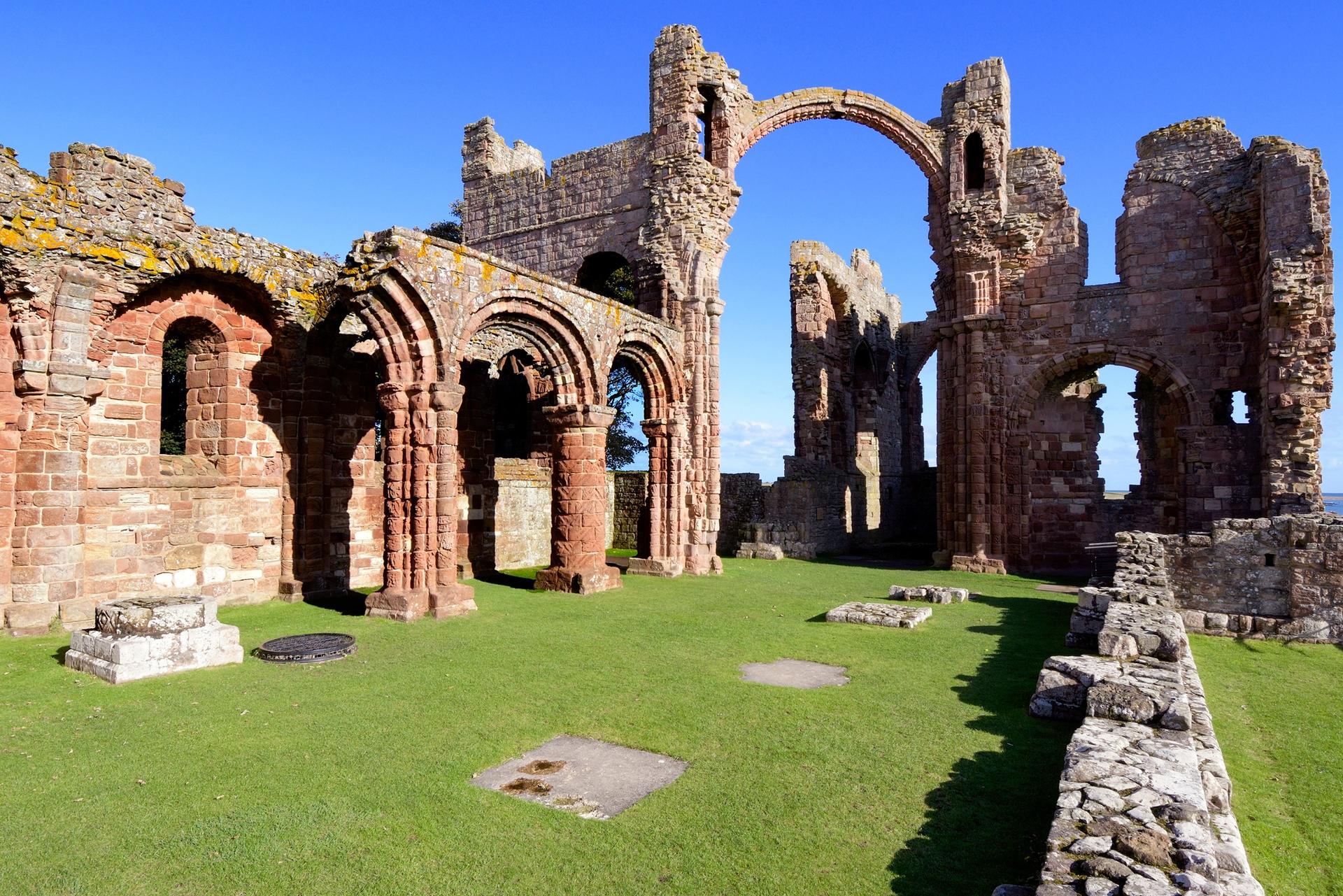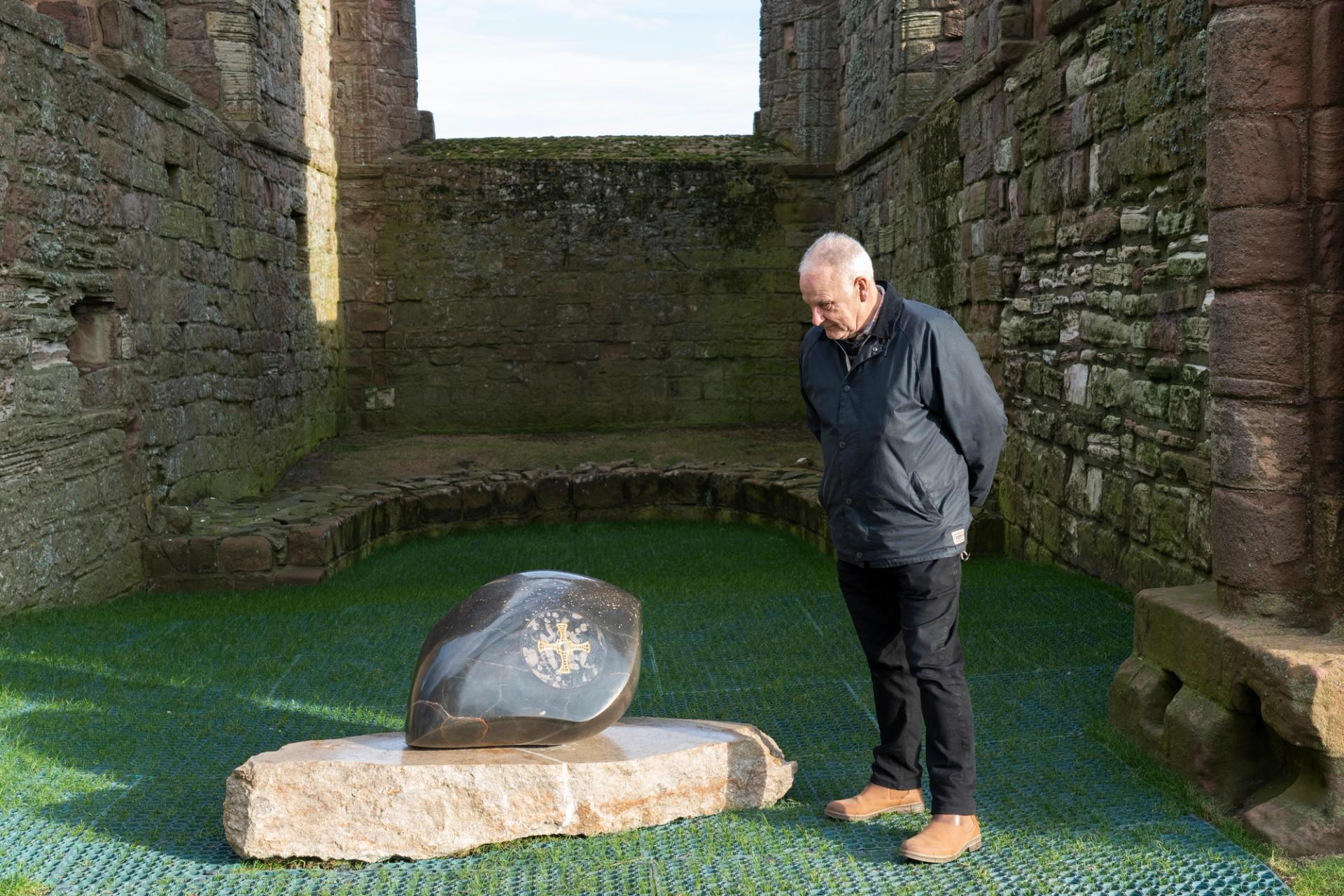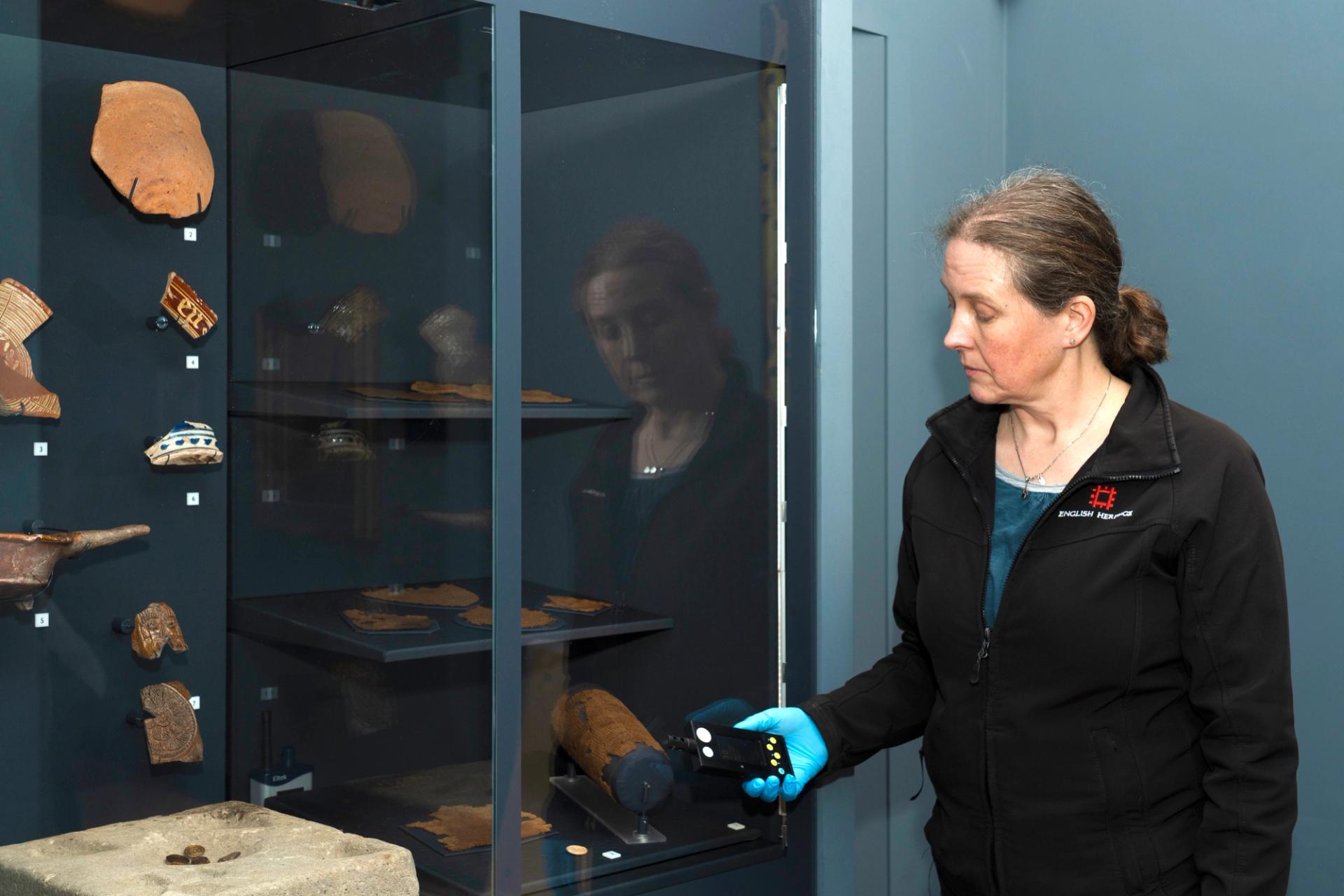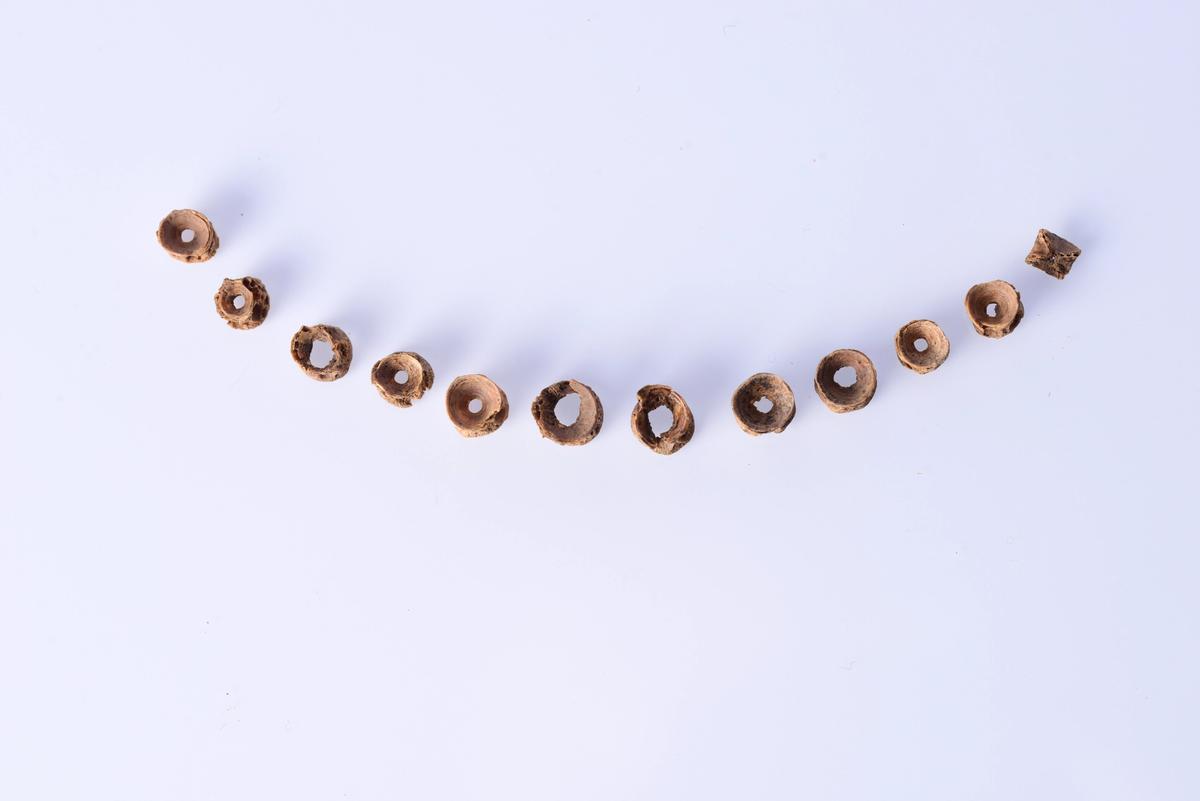The earliest set of prayer beads known in Britain, made from the delicate bones of salmon vertebrae and recently found around the neck of a man buried more than 1,100 years ago at Lindisfarne, an island off the north-east coast, will go on display for the first time in the new museum opening on the Holy Island.
English Heritage’s north collections curator Sue Harrison says: "Lindisfarne was, and has, remained a site of huge international significance, not only in its influences on the practices of Christianity in England, but also as the site of the first significant attack by Viking pirates in western Europe. The wealth of artefacts we have now been able to put on display in the museum is truly astounding."

The ancient ruins of Lindisfarne Priory
Courtesy English Heritage
The spectacular 12th-century ruins on the island, still accessible only by causeway at low tide, date from a much later phase of the monastery founded around 634 AD. The church was rebuilt several times after most of the monks fled Viking raids which began in 793 AD, taking with them their greatest treasures including the miracle working body of Saint Cuthbert, now the heart of Durham Cathedral, and the world famous Lindisfarne gospels, now in the British Library.
News of the raids on one of the most famous and wealthy sites in Britain spread across Christendom. Alcuin, a Northumberland scholar working on the Continent wrote: “The church of St Cuthbert is spattered with the blood of the priests of God, stripped of all its furnishing, exposed to the plundering of pagans”.
However Lindisfarne was never completely abandoned, and recent annual excavations involving archaeologists from Durham University and members of the public, crowdfunded through DigVentures, are peeling back its history between the waves of Viking raids and the great Norman priory. Finds—which will be on display in the new English Heritage museum—include grave marker stones inscribed in both Latin and runic script, a spear head, and a little Anglo Saxon glass gaming piece.

The new St Cuthbert Monument unveiled in the ruins of Lindisfarne Priory
Courtesy of English Heritage
The displays will also show finds from earlier excavations including fragments of rare 17th-century knitted textiles, and the “Viking stone”, a spectacular carving of a scrum of armed men which may represent either the Viking raiders or the Anglo-Saxon defenders.
English Heritage will also unveil a new monument within the ruins, at the spot traditionally believed to be the site of Cuthbert’s original grave. The sculptor Russ Coleman has used a large basalt boulder found locally, inset with Frosterley marble referencing the saint’s grave slab at Durham. The boulder rests on another piece of local Swaledale stone, studded with fossils of sea creature.

Curator Susan Harrison
Courtesy English Heritage
The salmon bone prayer beads also emphasise the close links between the people of Holy Island and the sea. They date from the eighth or early ninth centuries, considerably older than the set made of cod bones found at the nearby medieval chapel at Chevington, also in Northumberland.
The site and museum open on Saturday February 18, but opening hours vary with tide times and should be checked before visiting.


